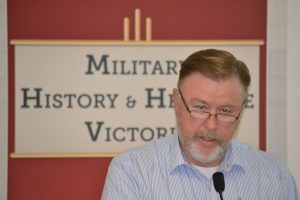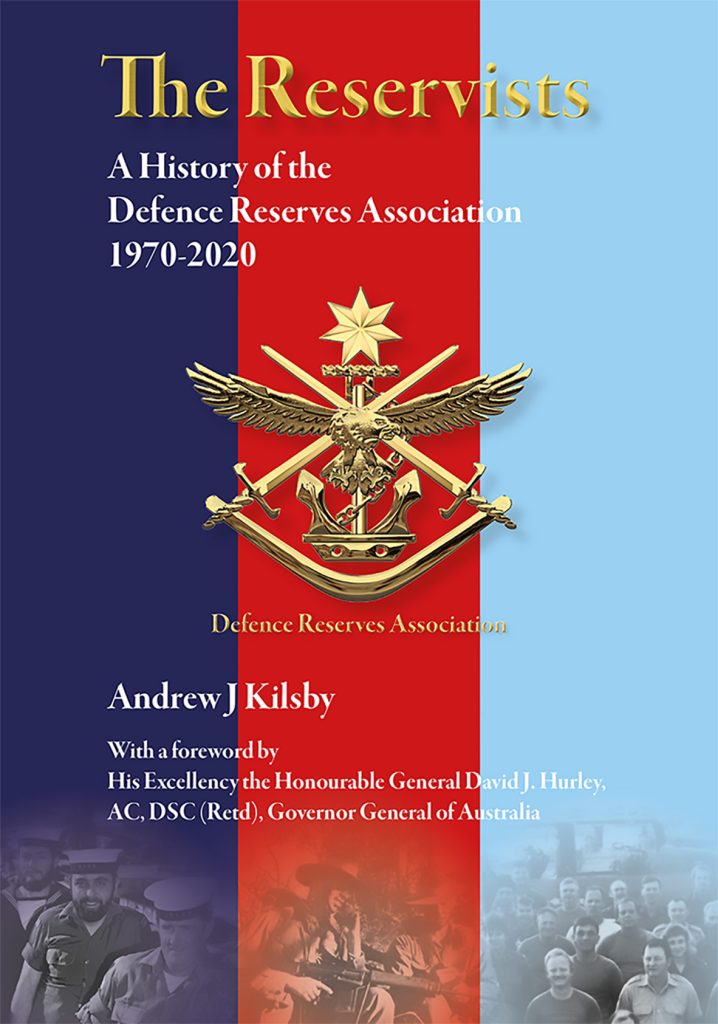Part-time service with the militia and then reserves has been a long and honourable tradition in Australia, often closely connecting local communities with the defence of Australia itself.
The evolution of the Army, Navy and Air Force Reserves has seen a huge number of changes, not always for the better, especially since World War Two. The competition between regular and reserve forces since 1948, for resources and influence over defence thinking and applications however, has not always been healthy for the defence forces as a whole. It was in response to a perceived loss of influence by the Reserves, particularly by the Army Reserve that the CMF Association was formed in 1970. This evolved into the Army Reserve Association (AResA) in 1986, and then to the Defence Reserves Association (DRA) in 1992. After 50 years however, the integration of the reserve forces with the regular is almost complete. Indeed, in the Navy and Air Force, the term ‘reservist’ no longer exists – and Army is not far behind as reservists have come to be seen as part-time employees of Army, complementing their full time equivalents.
The situation of ‘reservists’ today obscures the long journey to reach a more effective and efficient defence reserve force. When the CMF Association was formed by senior officers, many of whom had fought in World War Two, the reserve forces were seen to be under threat. In a rapidly changing world, in the middle of the Cold War and by non-involvement in the war in Vietnam, which was the domain of the regular professional soldiers, there was much angst about the future of the reserves in military and political circles.
Over coming years, the reserves were subjected to dozens of reviews and reports leading to endless ‘fiddling’ with the structure and purpose of the reserves. The fact that the reserves today are still a vital and even more effective part of the defence forces than ever before, can in part be laid at the feet of the DRA. Over 50 years and through all of its iterations, the association has steadfastly and comprehensively supported and defended the reserves as they have adjusted to new approaches to war fighting, peace keeping, technology and doctrine. It is tempting to say that it was almost in spite of political and bureaucratic (both military and public service) ‘leadership’ that the DRA was able to shepherd the reserves through many times, likened to being ‘eaten by moths’, when the very existence of the reserves was in question.
About the presenter
 Dr Andrew Kilsby is a founder of MHHV and a professional historian. His latest book, The Reservists: A History of the Defence Reserves Association 1970-2020, is being published by Echo Books in 2023. Dr Kilsby is a RMC Duntroon graduate and holds a PhD in history from ADFA@UNSW. Dr Kilsby has many citizen soldier family connections, from colonial militia through both World Wars and most recently with a family member serving with 4 CER.
Dr Andrew Kilsby is a founder of MHHV and a professional historian. His latest book, The Reservists: A History of the Defence Reserves Association 1970-2020, is being published by Echo Books in 2023. Dr Kilsby is a RMC Duntroon graduate and holds a PhD in history from ADFA@UNSW. Dr Kilsby has many citizen soldier family connections, from colonial militia through both World Wars and most recently with a family member serving with 4 CER.
Kilsby’s military history books include: Lions of the Day, The Bisley Boys, In the Field and On the Field: A history of Australian Army Rugby Union, The Case of Eichengruen-Edwards and Continental Tyres, The Riflemen: A History of the NRAA 1888-1988, Before the Anzac Dawn – contributed chapter, and The Forgotten Cruiser: HMAS Melbourne 1913-1928. In 2022 he convened the MHHV conference Hard Fought: Australia in the Mediterranean Theatre 1940-1945. He is currently working on a history of Australian aircrew involvement in the China-Burma-India theatre 1942-1945.
The book
The
Reservists
A History of the
Defence Reserves Association
1970-2020
Andrew J Kilsby
With a foreword by
General David Hurley, AC DSC FTSE,
Governor General of Australia
Find your copy here –
Contact Military History and Heritage Victoria about this article.







